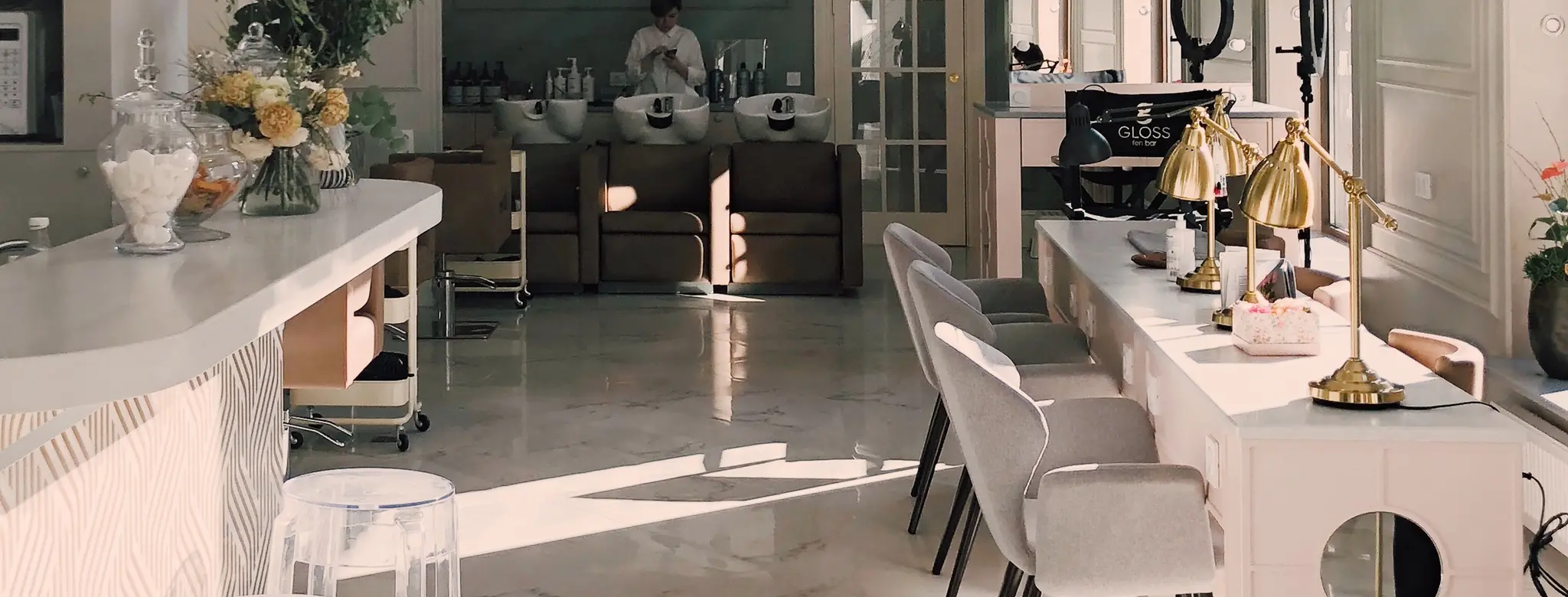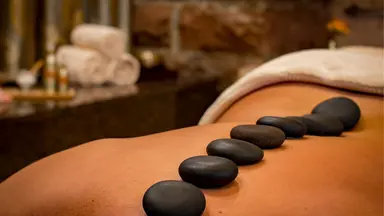
Impactful Design Considerations for a New Salon or Spa Space
By now you’ve heard that the salon and spa industry continues to grow and prosper—and you’ve decided that there is no time like the present to stake your claim and get into the beauty and wellness business yourself. But the first question always is, where to start on this project? We’ll outline some considerations that will help you to create, define, and shape your potential business, including location, design, budget, and more.
It's all about the location
First things first, where should your new beauty or wellness business be located? It should be convenient for you, of course, but more importantly, it should be convenient for your potential customers!
Visibility is helpful, but that doesn’t necessarily mean that you need to be on a ground floor space in a busy shopping district—a second-floor space will be much less expensive and may be just as accessible. On the other hand, customers don’t like stairs, so an upper floor space with elevator access would be perfect. If you are looking in a suburban location, outdoor space, parking and public transit access are considerations, both for your customers and your employees.
Finding the perfectly sized space
How much space do you need in your salon or spa floor plan? The answer to this is closely tied to the issue of scope (see the section below), but you can’t start scouting locations until you have a rough idea of your square footage requirements. Then, of course, there is the issue of what you can afford, addressed in the budget section (also below). Some concepts to consider:
- The more services and modalities you will offer, the bigger layout you will need—simple is better for starting out.
- A spa or salon sized between 1,500 and 2,500 square feet is a good target size for a new business—big enough, but not too big!
- Depending on your location, the local Cosmetology Board or Massage Board may have licensing requirements that relate to room sizes and layouts; be sure to do your homework in that regard.
Nailing down your scope
There was a time when consumers wanted to have all their personal care services (including beauty and wellness) in one place, but now we are seeing a high degree of specialization. In the marketplace today, there are multiple examples of beauty and personal-care businesses that offer only one modality or treatment (think big-box massage businesses and waxing salons, nail salons, and hair salons). We are even seeing specialization such as lash bars, cryotherapy, halotherapy, makeup studios, and meditation centers. Boutique beauty and grooming businesses will likely continue to thrive (even following COVID-19). And when you consider that, depending on the business mix, the different modalities may have different licensing requirements as well as treatment providers, you can see that focusing on fewer offerings would be easier.
On the other hand, it can be scary to put all of your eggs in one basket, so to speak. If you are going to offer one service, you will need to do it very well, be able to offer it at the hours that your consumers are looking for, and, most importantly, there has to be a demand for it in your region (or at least an awareness). It can feel exciting to be the first one to offer halotherapy or float tanks in your town, but you may have to spend the first year educating the public on the benefits of these treatments, so you’ll need to plan on having enough funding to survive this long lead time.
Let's talk about budget
While it’s impossible to predict all of the applicable finances with such a wide range of scenarios, here are a few guidelines to take into account:
- If you are doing a build-out in a strip center or other retail space, you should budget about $200 per square foot for the construction, fixtures and furnishings, inventory, and other start-up costs, in order to get you to the point of opening. So, a 2,000 square foot space would cost $400k.
- Depending on your service mix and region, you will likely need six to eight months of operating capital, until you are bringing in enough revenue to meet your costs. That is likely to be in the neighborhood of another $75k.
- Commercial real estate rental rates vary based on your region and a variety of other factors, but you can typically expect to spend anywhere from $18 per square foot (per year) to as high as $36 per square foot. So, at $20 per square foot, your monthly rent for a 2,000 square-foot space would be $3,333. Utilities are typically extra.
- Expect to sign a five-year lease, with a five-year renewal, in most cases.
- If you are able to purchase a property, expect to spend more at the outset of course, but owning the property can enable you to recover your expenditures and then some upon the sale of the building at some point, no matter how well your business does. It can be quite a project—but allows you to really achieve the design you want.
- Taking over an existing salon, spa, or even doctor's office, can be much more affordable on the build-out side. Just be aware that you may need to make compromises to your business plan or brand vision that could also have long-term adverse effects.
Check out our post on how much it really costs to open a spa.
Seeking out the optimal layout
While the many nuances of the best way to use your new space will depend on the shape and configuration of the area itself, there are certainly considerations of flow and ergonomics to take into account. Here are a few things to pay attention to:
- It should be obvious to consumers and passers-by that something fun and interesting is going on inside your beauty or wellness business.
- If you end up in a ground-floor space with windows, avoid filling up the windows with chairs for waiting customers, for instance, or it will look from the outside like a boring doctor’s office!
- Place retail in your windows—but not so high that potential clients cannot see in and get a glimpse of your design.
- Make sure the reception area is well-lit and the entryway is obvious.
- Retail and reception are generally grouped together by the entrance; transactions and ringing phones should be kept away from quiet zones.
In a salon setting, some buzz is expected, although you may want to create a quieter zone for your color and processing areas. It is common in salons today to have a color dispensary that opens onto the salon floor, much like restaurants currently feature show kitchens, and this is a space-saver. But it is also a good idea to have at least a small back-of-house dispensary for washing up and storage that doesn’t need to be public.
Spa treatment rooms, on the other hand, are meant to be quiet and are often separated from noisy front-of-house areas by lounges and changing areas as well as closed doors. This is an important part of your spa design. A high-traffic or high-turnover service, like makeup or waxing, may be located near the front of the house, as clients won’t be changing into robes for these services, and treatment rooms can be pushed to the back.
If you can afford the funds and have the layout for two bathrooms, this will enable you to designate one for staff and one for your clients, which leads to a much nicer guest experience.
In both salon and spa settings, where your staff is “on stage” all day, you will definitely need a functional break area where they can be relax for a bit. This will likely also house a full-sized refrigerator, stackable washer and dryer (even if you send your laundry out, you will still need a backup plan), and counter and storage space.
An office for yourself or management team is certainly important; without it, it can be difficult to interview prospective employees, meet with vendors, or just generally conduct business. The office is ideally located behind or adjacent to the front desk (reception desk), but the layout may dictate otherwise.
There is never enough storage. Ever. So please keep that in mind. Picture a busy Saturday with all of the treatment areas filled and laundry bins overflowing, and plan so that your design does not create a workflow nightmare for your staff.
Seek help on layout options from a design professional; not just an architect, but an interior designer who has done commercial spaces (as opposed to residential) and ideally someone who has designed spa, wellness, or salon spaces before.
The best advice I can give is to not sign any leases until you have, at a minimum:
- A firm salon business plan or spa business plan for what you will offer and what you can charge.
- A test-fit floor plan so you know how many revenue-generating stations you can fit into your spa or salon space.
- Realistic financial projections based on your design layout.
- A thorough evaluation of your competitive set within the regional market, so you know what pricing and service levels consumers are expecting.
I hope this helps make a complex process more understandable and obtainable. Designing and styling an appealing and functional spa or salon space can be a challenge, but, if done right, can streamline your operations, entice new clients, and help to define your brand.

